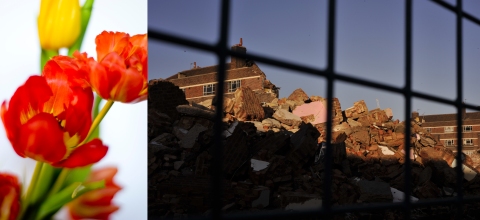UCL Cities Methodologies 2012
February 28, 2012 § Leave a comment
Hello everyone,
I saw this call for participants (pasted below) on an email list and thought it might be interesting for some of us – I initally thought I would submit some work but they want you to propose an event as well…….
I’m forwarding UCL Urban Lab’s call for participants for their annual Cities Methodologies themed showcase – not just for contributors from UCL but for ‘the wider community of urban researchers from any discipline’.
It’s usually quite an eye-catching mini festival. They are asking for proposals for exhibits and events which engage with the topic and which could range ‘from archival studies to statistical analyses, practice-led art and design work, oral history, writing, walking, film-making and photography’.
http://www.ucl.ac.uk/urbanlab/en2/index.php?page=1.3.0&getlistarticle=152&listrange=current
 (Note for the avoidance of confusion my name was Claire Haslam then and so is still on the blog as that – I am the same person!) Part of the point of that project was overlaying the text of a Neil Kinnock speech onto images of my then home as a way of trying out how to add text to an image, but also how to add text (or meaning itself) to a place.
(Note for the avoidance of confusion my name was Claire Haslam then and so is still on the blog as that – I am the same person!) Part of the point of that project was overlaying the text of a Neil Kinnock speech onto images of my then home as a way of trying out how to add text to an image, but also how to add text (or meaning itself) to a place.Like English life as a whole, nothing in Brooklands could be taken at face value.
JG Ballard, Kingdom Come
There still is life, however. Birds chirp; sparrows, they must be. Their small voices are clear and sharp, nails on glass: there’s no longer any sound of traffic to drown them out.
Margaret Atwood, The Year of the Flood
Deadline 1st May…
Canary Wharf: prose by Alex McIlhiney
March 18, 2011 § Leave a comment
From a distance, the tower and its neighbours looked little different than when I was a child, glass monoliths framed in steel, a dwarf Manhattan. It was only as I came closer that telling details revealed themselves; cracked window panes, once angular patches of lawn overgrown, smashed cars abandoned along the double red lines of private roads.
The central station had still kept much of its grandeur. The intricate arched roof was still intact, and the marble surfaces of the walls seemed to be impervious to vandalism. I walked down a stopped escalator into a large shopping precinct that had once been filled with restaurants and designer shops for the enjoyment of the district’s workers. Was this where the restaurant was? I couldn’t be sure. Much of it was now an indoor market of small stalls selling everything from household goods to cheap jewellery. There were a few chain stores remaining in the precinct, a supermarket and several shoe shops. Most of the outlets were in disuse, shutters permanently pulled down and bolted, the empty stores shrouded in shadows. A loop of classical music played quietly over the tannoy system, the piano notes blank and almost indistinguishable from each other.
A large group of schoolchildren were running through the halls, screaming and laughing then suddenly erupting into a massive play fight. On a bench a man in a leather jacket was showing a trick to a group of other men, hiding a ball under a cup then swiftly sliding it between two others. Money was changing hands.
I climbed another stopped staircase to exit onto the square at the centre of the district. My memory proved true and I remembered well the day I had met my father there. I had been here after that day, in my adult life, but no memories had been attached to those visits; why I had gone or who had I met. Around me the towers dominated everything, still impressive in their scale and construction. Most of them had boards and coverings over the panes cracked and shattered by youths from opposing neighbourhoods.
There was a small park here, a piece of lawn where a boy was training a dog by getting it to pull at a piece of rope. The dog would shake and tear at it vigorously. The boy saw me looking and stared back at me, half hostile, half front.
At the end of the path, underneath the tree, a shopping trolley sat upturned, empty, unexplained.
Everywhere there are CCTV cameras, perched at the top of poles or bolted to the sides of the towers. Most are broken; perhaps a few others feed blurred footage to blank monitors.
They are old and heavy, the metal rusted, the glass eye blinded by well-aimed stones. A few, knocked from their perches hang by their spinal cords. Others sleeker, modern, hidden, twist and turn on their axis relaying footage of their ancestors being assaulted to a remote control room, in a station behind closed shutters or to a drone circling overhead.
The water features at the centre of the square have been deactivated for reasons of ‘safety and cost’. The central fountain was choked at its opening by a knot of weeds that spread out across the granite in the small dents and cracks that had appeared over decades. On the green surrounding it a group of children were playing football. From photographs of its heyday I knew there were several sculptures around the estate, abstract figures symbolising freedom or prosperity, arms outstretched to the sky or chaste lovers sitting side by side. Most had gone now, although there were a few survivors covered in graffiti, being used as climbing frames by the younger children. Sold for scrap or hidden in storage, the symbols of a deposed regime removed but not replaced.











